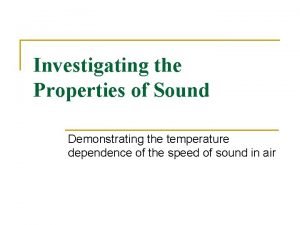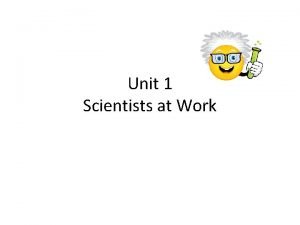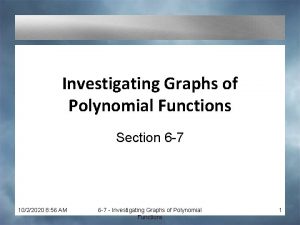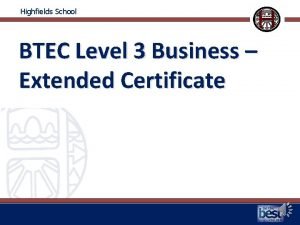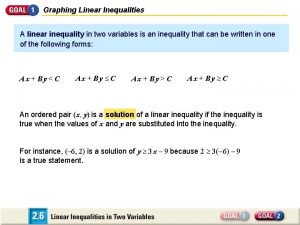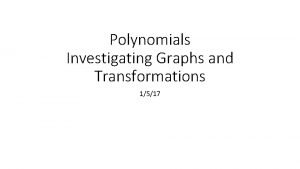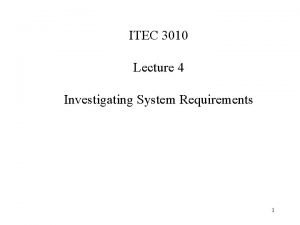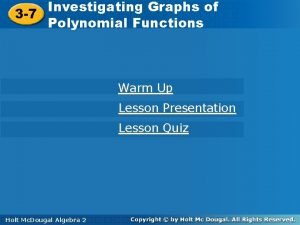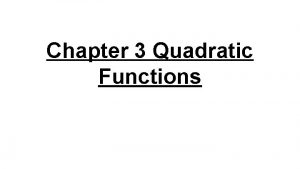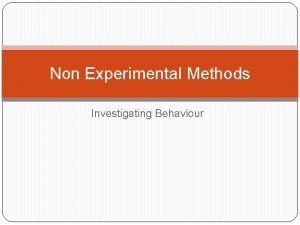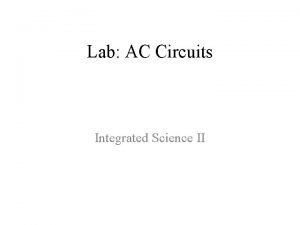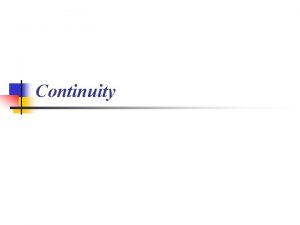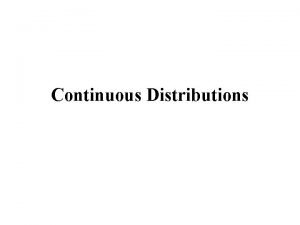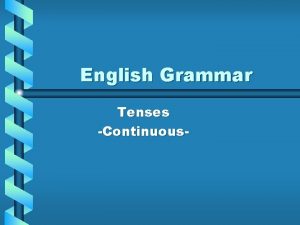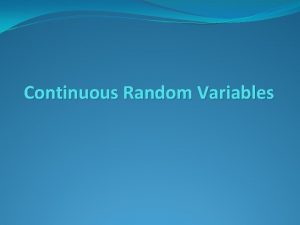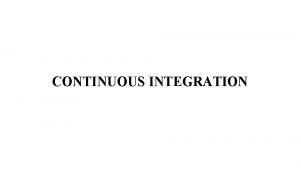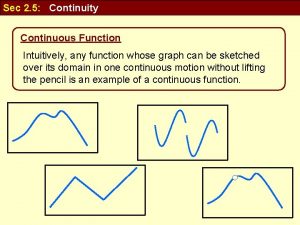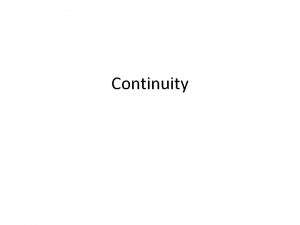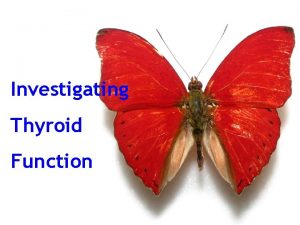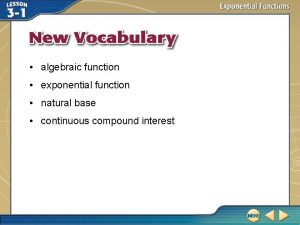A 4 CONTINUITY Investigating Continuity Continuous Function A












![Intermediate Value Theorem ■ If f is continuous on the closed interval [a, b] Intermediate Value Theorem ■ If f is continuous on the closed interval [a, b]](https://slidetodoc.com/presentation_image_h/084ccddc4dae640aec39c627d9ddb8a4/image-13.jpg)









- Slides: 22

A. 4 CONTINUITY

Investigating Continuity ■ Continuous Function – A function with a connected graph.

Definition of Continuity ■

Continuity ■ function is continuous on an interval IFF it is continuous at every point of the interval. ■ A continuous function is one that is continuous at every point IN ITS DOMAIN. ■ If a function is not continuous at a point, that is known as a point of discontinuity.

Types of Discontinuities NON REMOVABLE ■ Jump Discontinuity – The one-sided limit exists, but have different values

Types of Discontinuities NON REMOVABLE ■ Infinite Discontinuity ■ Let's say you have a function like f(x) = 1/x. – Then, as x goes to 0 from the right (x > 0), the function goes toward positive infinity. – As x goes to zero from the left (x < 0), the function goes toward negative infinity. – At x = 0, the function has no defined value. – We say that x = 0 is an infinite discontinuity, because the limits around the undefined point are infinite.

Types of Discontinuities NON REMOVABLE ■ Oscillating Discontinuity ■ An oscillating discontinuity occurs at a value of x near to which a function refuses to settle down. ■ The function y = sin (1/x) has a discontinuity at x = 0 because it is not defined at x = 0.

Types of Discontinuities ■ Removable discontinuity ■ A point on the graph that is undefined, or does not fit in with the rest of the graph. A “hole” in the graph. ■ The right-handed limit and the left-handed limit must be the same around the point of discontinuity. ■ A discontinuity is removable if f can be made continuous by appropriately defining (or redefining) f(c).

Identify each point of discontinuity and type

Continuity on an open interval ■ A function is continuous on an open interval (a, b) if it is continuous at each point in the interval.

Continuity on a closed interval ■

Continuity of a composite function ■
![Intermediate Value Theorem If f is continuous on the closed interval a b Intermediate Value Theorem ■ If f is continuous on the closed interval [a, b]](https://slidetodoc.com/presentation_image_h/084ccddc4dae640aec39c627d9ddb8a4/image-13.jpg)
Intermediate Value Theorem ■ If f is continuous on the closed interval [a, b] and w is any number between f(a) and f(b), then there is at least one number c in [a, b] such that f(c) = w.

Determining Continuity Algebraically ■ A function has a discontinuity at any point that makes the function undefined or indeterminate form on its domain.

Example 1 ■ Use the graph to determine the limit, and discuss the continuity of the function. = 1 = 2 = DNE

Example 2 ■ Use the graph to determine the limit, and discuss the continuity of the function. = 2 = 2 f(1) = 3

Example 3 ■ Discuss the continuity of the function The function is continuous at every value of x except x = 2.

Example 4 ■ Find the x-values (if any) at which f is not continuous. Which of the discontinuities are removable?

Example 5 ■

Example 6 ■ 2 2

Example 7 ■ 14 11 DNE

A. 4 Practice Problems ■ Pg. 78 -81 #2, 4, 6, 15, 17, 18, 25, 36, 40, 61, 63, 89 ■ Pg. 79 # 15 (decide if the function is continuous at x = 3) ■ Pg. 79 #17 (decide if the function is continuous at x = 1) ■ Pg. 79 # 18 (decide if the function is continuous at x = 1)
 Absolute continuity implies uniform continuity
Absolute continuity implies uniform continuity Present continuous and future continuous
Present continuous and future continuous Future simple in the past
Future simple in the past Investigating the properties of sound
Investigating the properties of sound Investigating science hsc
Investigating science hsc Investigating graphs of polynomial functions
Investigating graphs of polynomial functions Investigating graphs of functions for their properties
Investigating graphs of functions for their properties Investigating customer service
Investigating customer service Investigating the world of work. lesson 1
Investigating the world of work. lesson 1 6-7 investigating graphs of polynomial functions
6-7 investigating graphs of polynomial functions Unit 14 investigating customer service assignment 1
Unit 14 investigating customer service assignment 1 Investigating the graph of an inequality
Investigating the graph of an inequality Creative imedia r082
Creative imedia r082 Investigating polynomials
Investigating polynomials Investigating system requirements
Investigating system requirements Module 1 review questions
Module 1 review questions How is a delta formed
How is a delta formed Investigating graphs of polynomial functions
Investigating graphs of polynomial functions Investigating quadratics
Investigating quadratics Investigating rivers
Investigating rivers Investigating skills. thomas edison
Investigating skills. thomas edison Written observation example
Written observation example Integrated science lab experiments
Integrated science lab experiments



